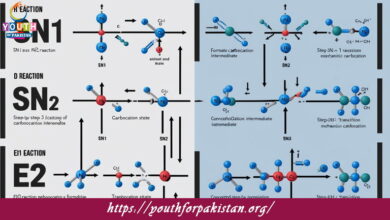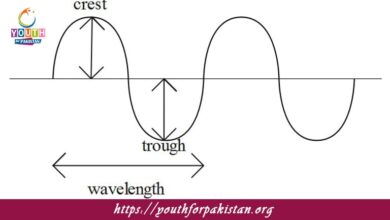Buffer Solutions MDCAT MCQs with Answers

Welcome to the Buffer Solutions MDCAT MCQs with Answers. In this post, we have shared Buffer Solutions Multiple Choice Questions and Answers for PMC MDCAT 2024. Each question in MDCAT Chemistry offers a chance to enhance your knowledge regarding Buffer Solutions MCQs in this MDCAT Online Test.
A buffer solution resists changes in pH when:
a) A strong acid is added
b) A strong base is added
c) A small amount of acid or base is added
d) A large amount of acid or base is added
Which of the following pairs forms a buffer solution?
a) HCl and NaCl
b) NaOH and KCl
c) CH₃COOH and CH₃COONa
d) H₂SO₄ and Na₂SO₄
The Henderson-Hasselbalch equation is used to calculate:
a) The pH of a buffer solution
b) The pOH of a solution
c) The solubility product constant
d) The rate of a reaction
A buffer solution consists of:
a) A strong acid and a strong base
b) A weak acid and its conjugate base
c) A weak base and its conjugate acid
d) Both b and c
The buffer capacity of a solution is defined as:
a) The maximum amount of acid or base it can neutralize
b) The pH of the solution
c) The concentration of the buffer components
d) The solubility product constant
If the pH of a buffer solution is increased, it indicates:
a) Addition of a strong acid
b) Addition of a weak acid
c) Addition of a weak base
d) Addition of a strong base
The buffer solution’s pH is equal to:
a) The pKa of the acid
b) The pKb of the base
c) The pKa + pKb
d) The pKa of the acid plus the logarithm of the base-to-acid ratio
What happens to the pH of a buffer solution when a small amount of strong acid is added?
a) The pH increases significantly
b) The pH decreases slightly
c) The pH remains unchanged
d) The pH becomes neutral
The pH of a buffer solution is most effective when:
a) The concentrations of the acid and base are very different
b) The concentrations of the acid and base are equal
c) The buffer solution is diluted
d) The buffer solution is concentrated
To make an acidic buffer, which of the following combinations is used?
a) A weak acid and its salt
b) A strong acid and its salt
c) A weak base and its salt
d) A strong base and its salt
To make a basic buffer, which of the following combinations is used?
a) A weak acid and its salt
b) A strong acid and its salt
c) A weak base and its salt
d) A strong base and its salt
Which buffer has the highest buffer capacity?
a) A buffer with high concentrations of both acid and conjugate base
b) A buffer with low concentrations of both acid and conjugate base
c) A buffer with only one component
d) A buffer with equal concentrations of a strong acid and strong base
Which of the following will not affect the buffer capacity?
a) Concentration of buffer components
b) Temperature
c) pH of the solution
d) Volume of the buffer solution
The pH of a buffer solution can be calculated if you know:
a) The concentrations of the weak acid and its conjugate base
b) The concentration of the strong acid only
c) The concentration of the strong base only
d) The temperature of the solution
The addition of a small amount of strong base to a buffer solution will:
a) Significantly change the pH
b) Slightly increase the pH
c) Slightly decrease the pH
d) Have no effect on the pH
The buffer solution will have a higher buffer capacity if:
a) The concentrations of the buffer components are lower
b) The pH is closer to the pKa
c) The pH is far from the pKa
d) The solution contains only a weak acid
Which of the following is an example of a buffer solution?
a) A mixture of NaCl and HCl
b) A mixture of NaOH and H₂SO₄
c) A mixture of NH₄Cl and NH₃
d) A mixture of KNO₃ and H₂SO₄
The main purpose of a buffer solution is to:
a) Change the pH drastically
b) Maintain a constant pH
c) Increase the pH of a solution
d) Decrease the pH of a solution
In a buffer solution, the ratio of [A⁻]/[HA] is:
a) Equal to the pH of the solution
b) Equal to the pKa of the acid
c) Related to the pH and pKa by the Henderson-Hasselbalch equation
d) Equal to the concentration of the conjugate acid
The effectiveness of a buffer solution is greatest when:
a) The pH is equal to the pKa of the acid
b) The pH is much higher than the pKa
c) The pH is much lower than the pKa
d) The buffer components are in equal concentrations
What happens to the pH of a buffer when a small amount of a strong acid is added?
a) It remains unchanged
b) It increases slightly
c) It decreases slightly
d) It decreases significantly
Which of the following is a correct way to prepare a buffer solution?
a) Mixing equal amounts of a strong acid and a strong base
b) Mixing equal amounts of a weak acid and a strong base
c) Mixing equal amounts of a weak acid and its salt or a weak base and its salt
d) Mixing a weak acid with water
The pH of a buffer solution is independent of:
a) The concentration of the acid
b) The concentration of the base
c) The ratio of the concentrations of acid and base
d) The absolute concentrations of the acid and base
The common ion effect is:
a) The effect of adding an ion common to the buffer solution
b) The increase in buffer capacity upon adding more buffer components
c) The decrease in pH when a common ion is added
d) The phenomenon of a buffer solution becoming less effective
The pH of a buffer solution can be shifted by:
a) Adding a large amount of strong acid or base
b) Adding a small amount of strong acid or base
c) Adding more buffer components
d) Changing the temperature
Which buffer would be effective in maintaining a pH of around 4.5?
a) A buffer made with acetic acid and sodium acetate
b) A buffer made with ammonia and ammonium chloride
c) A buffer made with hydrochloric acid and sodium chloride
d) A buffer made with sulfuric acid and sodium sulfate
Which of the following is true about a buffer solution?
a) It neutralizes strong acids and bases completely
b) It is most effective when the pH is far from the pKa
c) It resists changes in pH when small amounts of acid or base are added
d) It changes color in response to pH changes
What happens to the pH of a buffer solution if a strong base is added in large quantities?
a) It decreases significantly
b) It increases significantly
c) It remains the same
d) It decreases slightly
Which of the following solutions can act as a buffer?
a) NaCl and HCl
b) NaOH and H₂SO₄
c) NaHCO₃ and Na₂CO₃
d) HNO₃ and NaNO₃
The capacity of a buffer solution is affected by:
a) The pKa of the acid or base
b) The concentration of buffer components
c) The volume of the buffer solution
d) Both b and c
A buffer solution can be prepared by:
a) Mixing a strong acid with a weak base
b) Mixing a strong base with a weak acid
c) Mixing a weak acid with its conjugate base
d) Mixing a weak acid with water
The buffer solution is most effective:
a) When the pH is much different from the pKa
b) When the concentration of buffer components is low
c) When the pH is close to the pKa of the acid
d) When the temperature is high
In which of the following scenarios would a buffer solution be least effective?
a) When a large amount of strong acid is added
b) When a small amount of strong acid is added
c) When a small amount of strong base is added
d) When a large amount of strong base is added
The pH of a buffer solution made from acetic acid and sodium acetate is:
a) Always equal to the pKa of acetic acid
b) Determined by the ratio of [CH₃COO⁻] to [CH₃COOH]
c) Equal to the pH of pure acetic acid
d) Equal to the pH of pure sodium acetate
What will happen to the pH of a buffer solution if the concentration of the conjugate base is increased?
a) The pH will increase
b) The pH will decrease
c) The pH will remain unchanged
d) The pH will become neutral
The buffering action of a solution is:
a) Maximized when the concentrations of the acid and base are the same
b) Minimally affected by the concentrations of the acid and base
c) Maximum when the pH is far from the pKa
d) Equal to the amount of acid or base added
A buffer solution’s resistance to pH changes is due to:
a) The presence of strong acids and bases
b) The equal concentration of strong acids and bases
c) The presence of weak acids and their conjugate bases or weak bases and their conjugate acids
d) The absence of any acidic or basic components
When a buffer solution is diluted:
a) Its pH changes significantly
b) Its pH remains relatively constant
c) Its buffer capacity increases
d) Its buffer capacity decreases
If you are interested to enhance your knowledge regarding Physics, Chemistry, Computer, and Biology please click on the link of each category, you will be redirected to dedicated website for each category.





